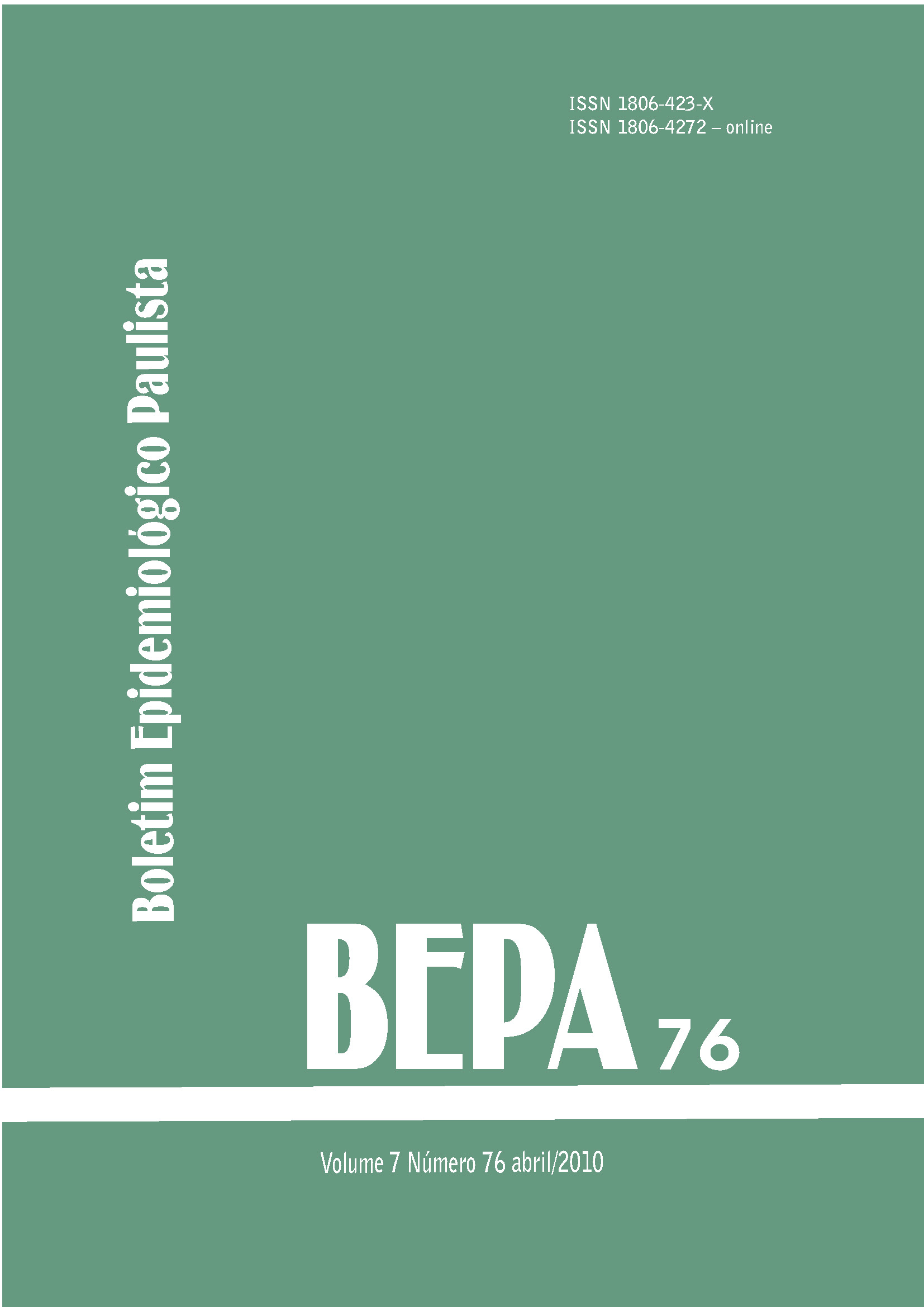Abstract
In Brazil, counterimmunoelectrophoresis (CIE) is a widely used laboratory method for bacterial meningitis diagnosis caused by Neisseria meningitidis (Men) serogroups A, B and C and Haemophilus influenzae (Hi) type b since 1970´s. With the introduction of real-time PCR (RT-PCR) assay at Instituto Adolfo Lutz routine diagnosis of meningitis caused by Men, Hi and Streptococcus pneumoniae (Spn), discrepant results between these two methodologies were found. In this work we investigated 46 cases with CIE positive results for Hib. Our main goal was to determine the ratio of Hib false positive results by CIE. For comparisons, we used RT-PCR method, latex agglutination test and culture when available. Among the 46 CIE Hib positive samples, 26 (57%) were false positive: 21 (46%) samples were Spn positives and 5 (11%) samples were negatives for Spn and Hib by both latex and RT-PCR methods. Our results show a high percentage of false positive results by CIE regarding Hib detection in CSF and sera samples. We recommend using latex agglutination or RTPCR rather than CIE for Hib determination or a second test confirmation for Hib CIE positive samples.
References
Palhares M, Gelli DM, Almeida MCR, Mellis CEA, Takeda AK, Taunay AE. Pesquisa de polissacarídeos de Neisseria meningitidis do grupo C no líquido cefalorraquidiano por imunoeletroforese cruzada em acetato de celulose. Rev Inst Adolfo Lutz. 1973;33:85-9.
Takeda AK, Umekita LF, Boscardin NB, Meles CAE, Taunay AE. Imunoeletroforese cruzada no diagnostic de meningite causada por Haemophilus influenzae tipo b. Rev Inst Adolfo Lutz. 1979;39:165-9.
Ballard TL, Spangler A, Roe MH, Glode MP. Clinically significant cross-reactions with counterimmunoelectrophoresis between pneumococcus type 6 and Haemophilus influenzae type b. J Clin Microbiol. 1985;22(5):754-6.
Instituto Adolfo Lutz, Seção de Imunologia, Laboratório de Meningites Bacterianas. Introdução da PCR convencional e em tempo real para o diagnóstico laboratorial das meningites bacterianas no Instituto Adolfo Lutz. Bepa. 2007;4(40):24-7.
Requejo HI, Nascimento CM, Fahrat CK. Comparison of counterimmunoelectrophoresis, latex agglutination and bacterial culture for the diagnosis of bacterial meningitis using urine, serum and cerebrospinal fluid samples. Braz J Med Biol Res. 1992;25(4):357-67.
Carvalho MGS, Tondella ML, McCaustland K, Weidlich L, McGee L, Mayer LW, et al. Evaluation and improvement of real-time PCR detection assay to lytA, ply, and psaA genes for detection of pneumococcal DNA. J Clin Microbiol. 2007;45(8):2460-6.
Corless CE, Guiver M, Borrow R, Edwards- Jones V, Fox AJ, Kaczmarski EB. Simultaneous detection of Neisseria meningitidis, Haemophilus influenzae, and Streptococcus pneumoniae in suspected cases of meningitis and septicemia using real-time PCR. J Clin Microbiol. 2001;39(4):1553-8.
Maaroufi Y, De Bruyne JM, Heymans C, Crokaert F. Real-time PCR for determining capsular serotypes of Haemophilus influenzae. J Clin Microbiol. 2007;45(7):2305-8.
Coonrod JD, Rytel MW. Determination of aetiology of bacterial meningitis by counter-immunoelectrophoresis. Lancet. 1972;1(7761):1154-7.
Hoffman TA, Edwards EA. Group-specific polysaccharide antigen and humoral antibody response in disease due to Neisseria meningitidis. J Infect Dis. 1972;126(6):636-44.
Edwards EA. Immunological investigations of meningococcal disease. I. Group-specific Neisseria meningitidis antigen presented in the serum of patients with fulminant meningococcemia. J Immunol. 1971;106(2):314-7.
Finch CA, Wilkinson HW. Practical considerations in using counterimmunoelectrophoresis to identify the principal causative agents of bacterial meningitis. J Clin Microbiol. 1979;10(4):519-24.
Argaman M, Liu TY, Robbins JB. Polyribitol-phosphate: an antigen of four gram-positive bacteria cross-reactive with capsular polysaccharide of Haemophilus influenzae type b. J Immunol. 1974;112:649-55.
Schneerson R, Robbins JB. Induction of serum Haemophilus influenzae type b capsular antibodies in adult volunteers fed cross-reacting Escherichia coli O75:K100:H5. New Engl J Med. 1975;292:1093-6.
Myerowitz RL, Gordon RE, Robbins JB. Polysaccharides of genus Bacillus crossreactive with the capsular polysaccharides of Diplococcus pneumoniae type III, Haemophilus influenzae type b, and Neisseria meningitidis group A. Infect Immun. 1973;8(6):896-900.
Naiman HL, Albritton WL. Counterimmunoelectrophoresis in the diagnosis of acute infection. J Infect Dis. 1980;142(4):524-31.
Kasper DL, Winkelhake JL, Zollinger WD, Brnadt BL, Artenstein MS. Immunochemical similarity between polysaccharide antigens of Escherichia coli O7:K1(L):NM and group B Neisseria meningitidis. J Immunol. 1973;110:262-8.

This work is licensed under a Creative Commons Attribution 4.0 International License.
Copyright (c) 2010 Lucila O. Fukasawa, Maristela M. Salgado, Maria Gisele Gonçalves, Anna Vera Custódio, Terezinha P. Araújo , Telma R. M. P. Carvalhanas, Ricardo K. M. Albernaz, Joana D'Arc P. Reis, Maria Irene Weyl A. Costa, Claudio T. Sacchi
